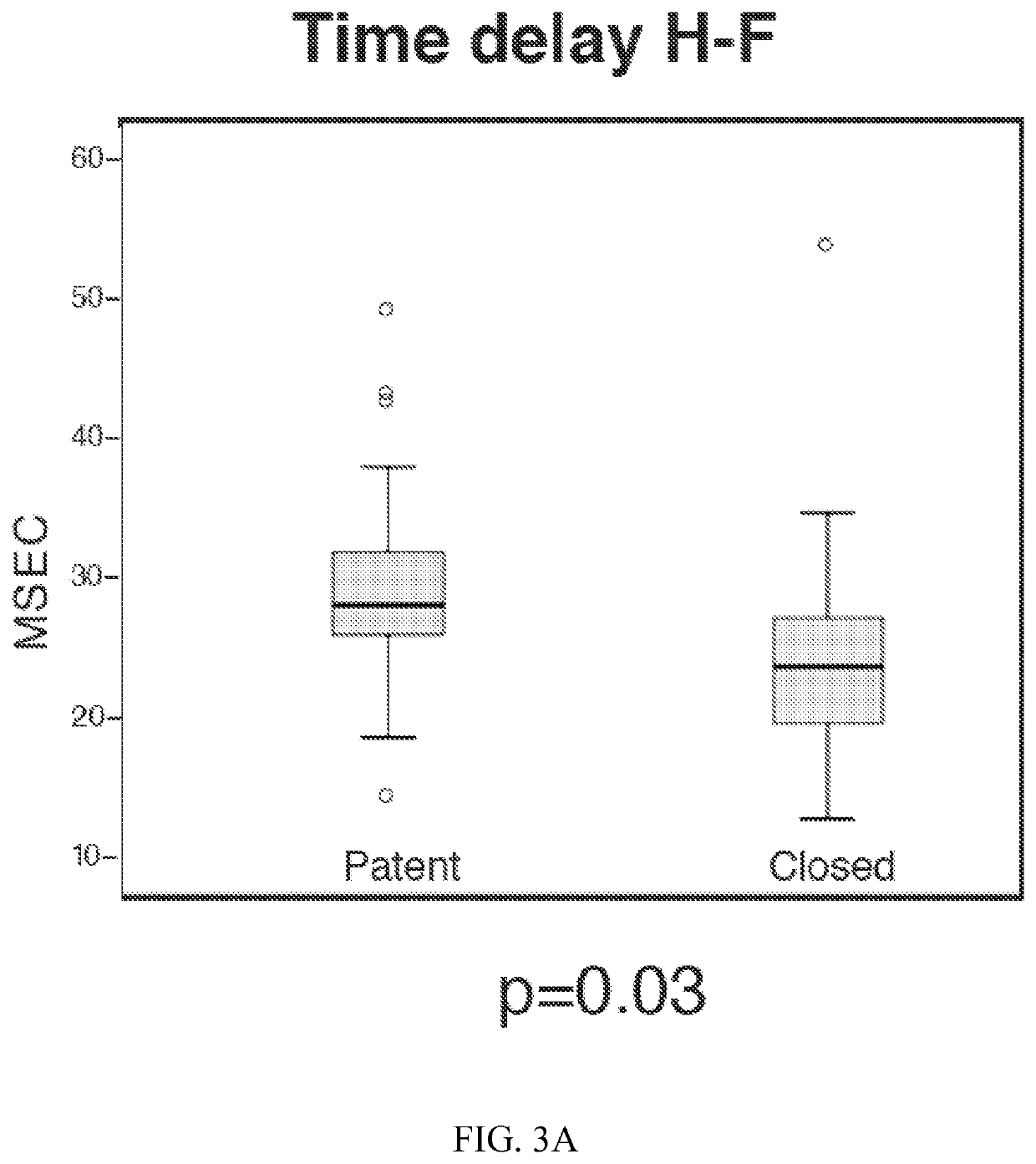Detection of patent ductus arteriosus using photoplethysmography
a technology of ductus arteriosus and photoplethysmography, which is applied in the field of detection of patent ductus arteriosus using photoplethysmography, can solve the problems of increased neonatal morbidity, low blood pressure, and significant morbidity and mortality in preterm infants
- Summary
- Abstract
- Description
- Claims
- Application Information
AI Technical Summary
Benefits of technology
Problems solved by technology
Method used
Image
Examples
Embodiment Construction
[0023]The invention provides a method for detecting the likelihood of a patent ductus arteriosus (PDA) in an infant comprising:
[0024]a) obtaining or receiving electrocardiogram (ECG) signals from the infant;
[0025]b) obtaining or receiving photoplethysmographic (PPG) signals from a site on the upper body (UB) of the infant, and optionally from a foot (F) of the infant;
[0026]c) determining, for each PPG pulse the PPG pulse amplitude (AM) between the end-diastolic maximum and the following minimum of systolic decrease for the UB PPG pulses;
[0027]d) determining the mean of one or more of the following parameters for a plurality of the PPG pulses in the selected section:[0028](i) a relative pulse amplitude (rAM) by dividing the AM by the systolic decrease minimum to obtain a rAM for the upper body (rAM-UB) PPG pulses;[0029](ii) a pulse transit time (PTT-UB) between an R wave of the ECG and the onset of systolic decrease for the corresponding UB PPG pulse;[0030](iii) a ratio PTT-UB / rAM-UB...
PUM
 Login to View More
Login to View More Abstract
Description
Claims
Application Information
 Login to View More
Login to View More - R&D
- Intellectual Property
- Life Sciences
- Materials
- Tech Scout
- Unparalleled Data Quality
- Higher Quality Content
- 60% Fewer Hallucinations
Browse by: Latest US Patents, China's latest patents, Technical Efficacy Thesaurus, Application Domain, Technology Topic, Popular Technical Reports.
© 2025 PatSnap. All rights reserved.Legal|Privacy policy|Modern Slavery Act Transparency Statement|Sitemap|About US| Contact US: help@patsnap.com



